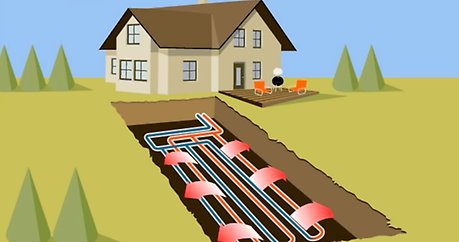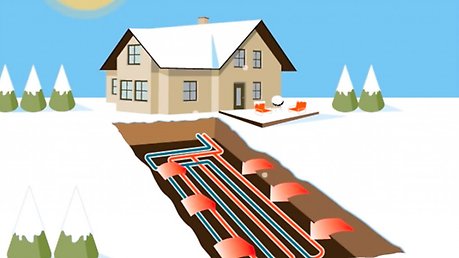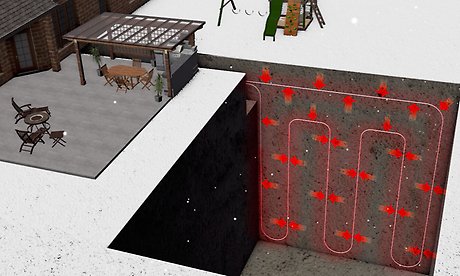GET DOWN TO EARTH
%20ClimateMaster%20Logo%20-%20White%20-%20No%20Tag%20-%20Small.png)
How Does a Geothermal System Work?
Video 1
What is a Geothermal Heating and Cooling System?
Wherever you live the temperature underground stays around 55°F, year round. To tap into this stable underground temperature, a geothermal system uses a loop of pipes buried in the ground. A solution of water and an environmentally safe antifreeze is pumped through this loop of pipes. This ground loop forms a large heat exchanger that is used by the geothermal system to heat and cool your home.
Video 2
Geothermal Loop Systems
There are four types of loop systems that can be installed with a ClimateMaster geothermal system. Vertical, horizontal, pond/lake loops, or an open loop system that taps into well water.
The type and size of loop system best for your home can be determined by your local, highly trained ClimateMaster geothermal dealer.
Video 3
System Comparison
How does a ClimateMaster geothermal system compare to other, conventional systems?
Geothermal systems are more efficient and cost less to operate than air source heat pumps for heating or cooling. Geothermal is also more efficient than oil, natural gas, or propane furnaces for heating.
Video 4
Why ClimateMaster?
Lifestory Research America’s Most Trusted Study, based on 17,878 national consumer opinions, ranked ClimateMaster among the most trusted HVAC brands in America, and ClimateMaster was the only geothermal brand ranked.

Geothermal Cooling
During the summer, ClimateMaster geothermal heating and cooling systems absorb heat from your home and transfers it to the underground loop where it is then absorbed by the cooler earth. The geothermal heat pump uses the cool water returning from the ground to create cool, dehumidified air conditioning for your home.
When you need cooling the most, the outside air is hottest. A traditional air source heat pump must work hard to force the heat from your home into the already heat saturated air. In contrast, a geothermal heat pump consumes less energy as it easily rejects heat into the cool earth, making geothermal cooling significantly more energy efficient.
How does geothermal heating and cooling directly compare with more traditional methods to heat and cool your home you probably use? Especially when it comes to HOW systems provide heating and cooling? This video answers your questions.

Geothermal Heating
During the winter, ClimateMaster geothermal heating and cooling systems absorb heat stored in the ground through the water that circulates in its underground loop. This heat is carried to the ground source heat pumps where it’s concentrated and then sent as warm, comfortable air throughout your home.
When you need heating the most, the air outside is coldest. As a result, a traditional air source heat pump works hard to extract the amount of heat from the cold air needed to properly heat your home. In contrast, a geothermal heat pump system consumes less energy as it easily absorbs ground heat from the abundant supply stored below your home, making geothermal heating significantly more energy efficient.
Gas furnaces burn natural gas to provide heat for your home and are only 98% efficient, while geothermal systems use significantly less energy collecting heat from the earth, achieving 400-600% efficiencies.
The ground absorbs nearly half of the solar energy our planet receives. As a result, the earth remains at a constant, moderate temperature just below its surface all year round. However, air temperature varies greatly from summer to winter, making air source (traditional) heating and cooling least efficient when you need it the most.
Geothermal heating and cooling systems take advantage of the stable temperature underground using a piping system, commonly referred to as a “loop.” Water circulates in the loop to exchange heat between your home, the ground source heat pump, and the earth, providing geothermal heating, cooling, and hot water at remarkably high efficiencies.
In fact, ClimateMaster geothermal heating and cooling systems are 400-600% efficient and can cut your heating, cooling, and hot water costs by up to 70%.
Interested in how geothermal energy can work in your home? Contact one of our friendly local dealers through the form on the right or use our easy geothermal savings calculator to see how much you could be saving with geothermal heating and cooling!
Here's what the US Dept. of Energy says about geothermal heat pumps:
ClimateMaster, Inc
7300 SW 44th St
Oklahoma City, OK 73179
800.299.9747
© ClimateMaster, Inc. All rights reserved 2024


